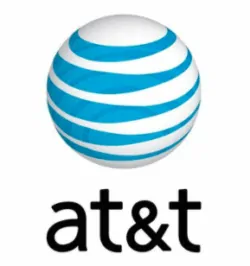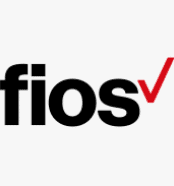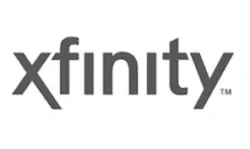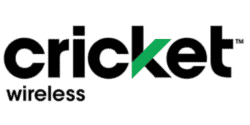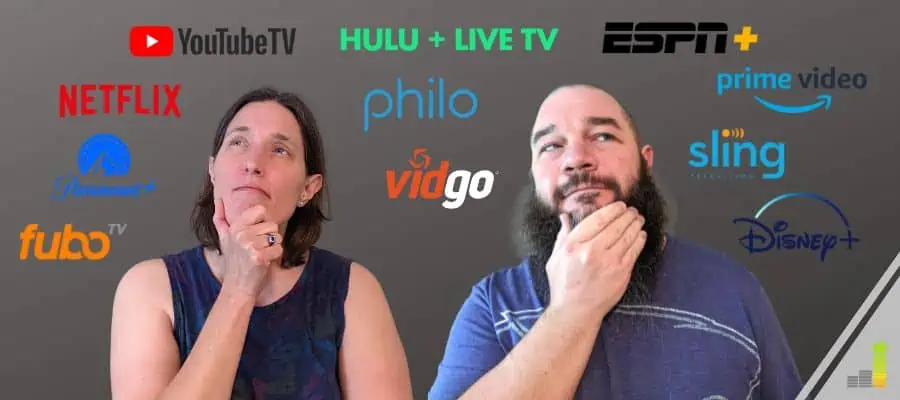Cutting the cord and ditching cable is one of the easiest ways to save money. However, a common problem cord-cutters encounter is how to get internet without cable TV. This issue continues to plague those who want to cancel cable because many providers like to bundle internet with TV plans.
This is done for two reasons – to make us believe we’re saving money and for cable companies to keep their subscription numbers up. If you’re trying to find out how to get internet without cable or a phone line you’ve likely experienced this frustration.
We recently dealt with this on a call to negotiate a lower internet price. The salesperson tried to upsell us to get cable and a phone line. His pitch was that bundling might save us money. However, all we wanted was affordable internet access. As you might guess, we did not fall for their sales tactics.
Table of Contents
How to Get Internet Without Cable
Thankfully there are ways to get service without cable TV, but it does take work on your part to find the best option.
In our case, the process was simple. We had DIRECTV, which was separate from our internet service. The combined bill was roughly $200 per month. We canceled DIRECTV to lower that cost.
Here’s how to cancel DIRECTV if you have the service and want to save money. We were able to cut our monthly bill in half when we did this.
The challenge many people face is breaking free of the bundle. Your provider may try to convince you there are no ways to get cheap internet service without cable or a phone line.
Don’t be fooled. There are many options to consider and some that provide fantastic service.
Yes, there are challenges. For example, if you stream a lot of content or live in a rural area. Even in those circumstances, it is possible to get wireless internet without cable.
Here are the best cheap internet service providers to help you get wireless internet without cable TV.
1. AT&T
The best Internet Service Provider (ISP) in my area is AT&T. AT&T owns the DIRECTV family of satellite and streaming providers. They also offer standalone wireless internet across much of the country in addition to phone services.
AT&T Wireless is $55 per month for speeds up to 300 Mbps. AT&T does offer higher speed plans, but that commonly involves bundling with phone or satellite and can frequently change.
If you can live without either, the $40 plan should serve your needs.
AT&T Wireless offers service in the following States:
- Alabama, Arkansas, California, Florida
- Georgia, Illinois, Indiana, Kansas
- Kentucky, Louisiana, Michigan, Mississippi,
- Missouri, Nevada, North Carolina, Ohio
- Oklahoma, South Carolina, Tennessee, and Wisconsin
AT&T does not offer service across the country. This is not uncommon with service providers. Fortunately, it’s not difficult to get internet with another provider.
2. Verizon Fios
Verizon Fios is an arm of telecom giant Verizon that offers internet-only plans. While you’d expect that Verizon Fios would be in many locations, that is not the case.
Verizon Fios is currently only available in certain parts of these states:
- Delaware, Maryland, Massachusetts, New Jersey
- New York, Pennsylvania, Rhode Island,
- Virginia and Washington DC
The Verizon $49.99 Plan
Verizon Fios gives you up to 300 Mbps with this lower-tier plan. This plan is an exclusive deal you can only find on the internet. Be aware that this plan requires a one-year contract.
Verizon waives the setup charges when you join online. You also receive free Discovery+ (Ad-Free) for the first three months.
After three months, this will auto-renew at $6.99 plus tax each month unless you cancel with Verizon.
Read our Discovery Plus review to learn more about the service.
The Verizon $69.99 Plan
If you have multiple users, Verizon’s $69.99 plan gives you 500 Mbps in their mid-tier plan. This plan may be the better option if you share large files or want to binge stream content.
You need to sign up for a one-year contract to receive this price.
Sign up online and Verizon will waive your setup fees. They also include free Discovery+ (Ad-Free) for six months. After six months this will auto-renew at $6.99 plus tax every month unless you cancel with Verizon.
The Verizon $89.99 Plan
This plan provides a speed of one Gig. Also, like the other plans, you get a few extra perks.
You’ll enjoy a free year of Discovery+ with your plan subscription. After a year you’ll be billed $6.99 plus tax each month unless you cancel with Verizon.
In addition to all of this, your router rental charges are included and you get a free Stream TV device.
Select 5G home internet plans also qualify to get NFL Sunday Ticket courtesy of Verizon.
3. Xfinity by Comcast
Comcast is well-known among the cord-cutting community since they offer cable in much of the country. The Xfinity Internet plans do not require a cable TV contract, but a bundle is possible.
Comcast does offer numerous plans, depending on your level of need, location, and whether or not you have cable. The internet-only plan is $40.00 per month, for 200 Mbps.
*Related: Get the same plan for $25 a month, for two years and without a contract.
There is a one-time $35 modem purchase as well.
Xfinity has recently added Supersonic WiFi for their Gigabit and Ultrafast plans, which can provide speeds faster than 1 Gbps and has three times more capacity.
You’ll get faster upload and download speeds as well as increased security. The Gigabit plan is $80 per month for the first year and the Ultrafast plan is $70 per month for the first year.
If you want TV along with internet service, Xfinity has two plans to choose from:
- $50.00 per month, which includes ten TV channels and requires a one-year contract. Be aware these channels are largely local. You also get 200 Mbps for download speeds. This plan works for up to five devices at once.
- $80.00 per month, which includes 125 TV channels. This plan works for up to eight devices at once, provides up to 300 Mbps download speeds, and requires a one-year contract. However, if you sign up for two years at the same price, you can increase your download speed to 600 Mbps.
Comcast offers plans in the following states:
- Alabama, Arkansas, Arizona, California, Colorado
- Connecticut, D.C., Delaware, Florida, Georgia
- Idaho, Illinois, Kansas, Kentucky, Louisiana
- Massachusetts, Maryland, Maine, Michigan, Minnesota
- Missouri, Mississippi, New Hampshire, New Jersey, New Mexico
- New York, North Carolina, Ohio, Oregon, Pennsylvania
- Rhode Island, South Carolina, Tennessee, Texas, Utah
- Vermont, Virginia, Washington, West Virginia, and Wisconsin.
One other feature of Xfinity is they offer cell phone plans to internet customers. Below are some of the details of the service:
- Free, unlimited nationwide talk and text
- No line access fees for up to ten lines
- Free access to 18+ million Wi-Fi hotspots
- 100 MB of shared data for free, each month
You can also purchase data for $15 per month per GB. If you prefer unlimited data, you can get that for $45 per month per line. They operate on the Verizon network, so it’s quality coverage.
If you’re looking for both internet and cell phone service, Xfinity customers can now get internet and streaming for only $30 per month when they add an Xfinity Mobile plan.
Xfinity is now offering Xfinity Flex, a new streaming TV box with all your favorite apps plus voice controls. Sign up today for a one-time activation fee of $15, which will be included on your first bill after signing up.
Xfinity is proud to participate in the Affordable Connectivity Program (ACP). Qualified customers can receive a credit of up to $30/month towards their Internet and mobile service. Learn more today!
Read our Xfinity Mobile review to learn more about the service.
4. FreedomPop
FreedomPop offers a wireless internet connection through a hotspot device using the Sprint network. You can use your phone as a mobile hotspot or buy a standalone device.
This lets you get internet coverage at home or in public places. Choosing FreedomPop can be a good option when a cable company isn’t an option.
FreedomPop offers several high-speed data plans. Your monthly cost depends on your monthly 4G LTE data allowance. It’s possible to pay less when buying a multi-month plan.
You can pay in advance for either three, six, or twelve months.
The FreedomPop Talk, Text, and Data
FreedomPop phone plans offer up to 10 GB of 4G LTE data but their free plan gives you 500 MB of 4G LTE data. Each Premium phone plan comes with at least 1 GB of 4G LTE data plus unlimited talk and texts.
You can buy a FreedomPop phone although most unlocked AT&T or T-Mobile phones are compatible.
Depending on your phone’s features, you can tether to other devices or enable a personal hotspot. The Talk, Text, and Data plans are a good option if you mostly access the internet from your phone.
Below are some of the phone, text, and data plans available through FreedomPop:
- Free plan. This plan costs $0 monthly for 200 minutes, 500 texts, and 500 MB of 4G LTE data. Of course, this plan is only good if you sparingly use data and have other WiFi access. Additional data costs $.025 per MB, but there are no overage charges.
- 2 GB plan. You get 2 GB of 4G LTE data each month for $24.99 per month. New FreedomPop customers get a free one-month trial for this plan.
- 5 GB plan. Paying $34.99 per month gives you 5 GB of 4G LTE data each month.
- 10 GB plan. This upper tier plan costs $59.99 per month and gives you 10 GB of data.
Additional data costs $0.02 per MB for Premium plans with no overage charges.
The Freedompop Nationwide LTE Plan
A FreedomPop mobile hotspot plan may be a better option if you want tablet or laptop internet access. Multiple devices can connect to a single hotspot.
These plans can also deliver more data at a cheaper price.
You can earn free data by referring friends to FreedomPop and completing shopping offers.
Refurbished FreedomPop hotspot devices cost start at $24.99. After this one-time purchase, your only recurring cost is your monthly data plan.
The current data-only monthly plans are below:
- Basic GSM 200. This free data plan gives you up to 200 MB each month. However, this is the standard 4G data instead of the high-speed 4G LTE. Each additional megabyte costs $0.025 each. According to FreedomPop, this plan is excellent for social media and email.
- Premium GSM 2GB. The entry-level premium hotspot plan is free for the first month and then $19.99. Each additional MB of data costs $0.01.
- Premium GSM 3GB. Paying $26.99 per month gives you 3 GB of 4G LTE data. Like the other premium data plan, you pay $0.01 per extra MB.
FreedomPop offers coverage in most of the country with Sprint coverage. However, there are significant limitations in Montana, Nebraska, North Dakota, South Dakota, and Wyoming.
5. Cricket Wireless
Another excellent on-the-go wireless internet option is Cricket Wireless. This prepaid provider offers data-only mobile hotspots using the AT&T network.
Cricket offers two mobile Wi-Fi hotspot plans with 4G LTE data:
- 20 GB Simply Data: $35 per month
- 40 GB Simply Data: $50 per month
Currently, Cricket doesn’t offer add-on data packaged to the hotspot plan. It’s possible to bring your own data device or purchase one for $79.99.
A 15 GB personal hotspot also comes with Cricket’s $60 per month phone plan. An additional 15 GB of monthly data costs $10 with this plan.
This plan might be best if you want a prepaid cell phone plan. Read our guide on the best prepaid phone plans to learn more.
6. Google Fiber
Google Fiber is one of the more interesting ways to get internet without cable or a phone line. As Google is synonymous with the internet, it stands to reason that they offer decent service for those wanting to reduce expenses.
*Related: Want to cut the cord? Read our guide on the Amazon Fire Stick to see how it can help you save $50+ per month on cable.*
Google Fiber primarily offers two services: internet and television. Their plans vary based on where you live. Some locations require a television package to get their higher-tier internet packages.
Here is where you can currently find Google Fiber:
- Atlanta, Austin, Charlotte, Chicago, Dallas, Denver
- Des Moines, Huntsville, Jacksonville, Kansas City, Los Angeles
- Louisville, Miami, Nashville, North Carolina’s “The Triangle,” Oakland
- Oklahoma City, Orange County, Phoenix, Portland, Provo
- San Antonio, San Diego, San Francisco, Salt Lake City, Seattle, and Tampa
It’s important to note that some of the locations only offer access if you live in an apartment or condo. Google Fiber offers up to five plans in each “Fiber City.”
While these plans have no contract, you may need to add a TV package.
Below are the two basic plans that only provide internet service.
1 Gig: The I Gig plan costs $70 per month, with up to 1 Gig in speed. You do not have any data caps. You can download an HD movie in minutes and use up to five devices with this plan.
2 Gig: The 2 Gig plan costs $100 per month, with up to 2 Gigs in speed. Like the Gig 1 plan, this plan has no data caps or contract. You can use up to ten devices and download an HD movie in under a minute.
7. Boost Mobile
Do you live in a Sprint coverage area? If so, Boost Mobile has one of the best mobile hotspot plans. You get 50 GB of 4G LTE data for $50 each month.
When joining Boost, you make a one-time $50 purchase for a Coolpad Surf hotspot device.
A Boost hotspot connects up to ten devices at once and prevents you from relying on unsecure public Wi-Fi networks.
8. Charter Spectrum
Charter Spectrum is another standalone wireless internet provider that has a fairly wide reach. They only list one plan on their site, which is $49.99 per month for 300 Mbps.
But your wireless speeds may be as high as 940 Mbps depending on where you live.
While this plan requires a 12-month commitment, it does come with a free modem.
Charter Spectrum offers plans in the following states:
- Alabama, Arizona, California, Colorado, Connecticut
- Florida, Georgia, Hawaii, Idaho, Illinois, Indiana
- Kansas, Kentucky, Louisiana, Maine, Maryland
- Massachusetts, Michigan, Minnesota, Mississippi, Missouri
- Montana, Nebraska, Nevada, New Hampshire, New Jersey
- New Mexico, New York, North Carolina, Ohio, Oregon
- Pennsylvania, South Carolina, South Dakota, Tennessee, Texas
- Utah, Vermont, Virginia, Washington, West Virginia, Wisconsin, and Wyoming
You can view the details of the plan and see what specific plans they might offer in your area by checking here.
9. DSL Extreme
Seeing a DSL provider on the list of best companies to get internet without cable may surprise you. DSL Extreme makes this list since they operate on the AT&T U-Verse network, allowing them to offer faster speeds.
Like a few of the other providers, their plans and bandwidth speeds depend on where you live. Their standard plans offers speed of up to one Gig for $47 a month.
As with other plans, DSL Extreme does require a 12-month commitment.
DSL Extreme has less coverage than some of the other providers, but it’s possible to spend less per month than getting fiber. You might only be able to use DSL Extreme if you have access to AT&T Wireless Internet.
DSL Extreme offers plans in the following states:
- Alabama, Arkansas, California, Florida, Georgia
- Illinois, Indiana, Kansas, Kentucky, Louisiana
- Michigan, Missouri, Mississippi, Nevada, North Carolina
- Ohio, Oklahoma, South Carolina, Tennessee, Texas, and Wisconsin
You can check plan availability here.
What is the Average Cost Per Month for Service?
You want to make cutting the cord on cable worth it. In certain instances, the math may not make it feasible to cut the cord and still stream.
You want to balance not having too expensive of a plan with avoiding buffering when using streaming services.
The average internet cost is roughly $70 per month. We pay approximately $75 per month for our service because my wife and I run our business from home which requires us to have faster service.
That is the upper limit of what we’re comfortable paying.
You want to find a good balance that still provides enough room to purchase the content you want to watch. Many of the best cable TV alternatives are reasonably priced.
However, you don’t want the combination to cost more than your current bundle. Otherwise, you lose money each month.
Why Is it So Difficult to Find A Provider?
A major problem is the lack of competition in the broadband service space. Limited options make it difficult for those determining how to get wireless internet without cable.
It’s worse if you only have access to one provider.
Sometimes, the “best internet provider” is the only one willing to offer you service. This might be the case if you live in a rural area.
A 2019 study by BroadbandNow points out an unsurprising fact – those who live in an area with multiple options pay lower prices for their service.
Unless you live in an area that has multiple ISPs, you likely face a monopoly. This makes it harder, but not impossible, to save money.
How to Find Internet Providers in Your Area
You may have different options when trying to figure out how to get affordable service. Some options may simply be a DSL provider. Others may be a genuine, standalone wireless provider.
The best way to find internet providers in your area is through a simple web search. Simply type in “internet providers near me” and your zip code to see companies in your area.
There are many standalone ISPs in the space, so you want to ensure you find one that meets your needs.
Can I Get Wi-Fi Without an Internet Provider?
If you need to know how to get Wi-Fi without cable, it is possible to do so without an internet provider. Having Wi-Fi through a provider is straigtforward, though you do have other options.
Those include:
- Through a mobile hotspot
- Find free public Wi-Fi
- Tethering your smartphone
- Ask a neighbor to borrow their service
Each of the above poses its own risks and savings, so do your due diligence before pursuing an option.
How Do I Get Internet Without A Phone Line or Cable?
Many cable companies like to bundle internet with cable and/or a phone line. Cable internet alternatives are available to help you reduce costs. Those options include:
- Satellite internet
- Wireless fixed internet
- Naked DSL
- DSL internet
- Fiber optic internet
What’s available largely depends on the services available in your area. If you don’t know what is available in your area, a simple search for ‘internet service providers near me’ will point you in the right direction.
Must-Ask Questions
Many of us have come to depend on fast internet service to meet our needs. We run a business from home that depends on fast internet.
Consequently, we care greatly about fast speeds.
Other families have a lot of streaming needs, so they need a big data allowance to cover those needs. You may have different needs.
For example, if you stream a lot of TV, you want to know the minimum internet speed requirements of the service to ensure what the ISP will be sufficient.
As a result, it’s important to ask questions before deciding on an ISP.
Here are the six most important questions to ask an ISP.
What download speeds can I expect?
This is likely the most important question to ask a provider. The provider may not be able to deliver the “up to” speed they advertise.
You want to ask the level of internet speeds they can guarantee. If it does not meet your needs, then you need to look elsewhere.
Do you have a data cap?
The last thing you want to do is run into a situation where you’re charged an outrageous overage fee. Extra data add-ons can also be pricey.
Make sure you explicitly know what data caps they have. If it’s too restrictive, then you need to choose another provider.
What happens at the end of the introductory period?
Many providers market a product with a low, introductory price. Check pricing at multiple providers so you can arm yourself with information.
The last thing you want is to see pricing double after a year. Price jumps may come as a surprise if you don’t ask about introductory pricing.
Are there any additional fees?
ISPs, like cable companies, love fees. The quoted price often does not include additional costs like taxes, equipment installation fees, and service charges.
You may also pay a monthly modem rental fee. However, this fee can cost less than paying service fees to fix a broken modem that you own.
When comparing providers, you want to ask what your initial upfront cost will be along with your monthly charge.
How do I cancel my service?
Telecommunication companies often make it difficult and expensive to cancel service. Ask each provider you compare what costs you will incur if you choose to cancel.
*Related: Do you want to ditch your TV provider, but want to avoid early termination fees? Read our guide on how to avoid TV cancellation fees to learn more.
Don’t forget to ask what to do with any equipment you have from the provider. They often require it to be returned upon cancelation.
Make sure to ask what they expect returned and when to avoid being charged.
Should I buy my own router or modem?
Don’t overlook this question. Many providers will give you the necessary equipment, but it often comes at a cost of $10 or $20 per month.
That can add up over time.
You can buy your own router or modem, but make sure to ask if it will work with their service. Buying your own router or modem is not cheap, but it can save you money in the long run.
Make sure to buy the newest available product so you can get the best possible speeds. New devices may also have a longer lifespan.
Here are the best routers from Amazon if you choose to buy your own.
Bottom Line
Many people choose not to cut the cord because they think they can’t get internet service without cable. That is not the case as there are many standalone wireless internet-only service providers in the space today.
There is a lot of homework to do before taking the plunge. With many providers to wade through, you want to find the best possible plan for your needs.
Cutting the cord is a good thing, but you want to do the math first. Try and make sure you find the lowest-cost option that meets your needs for both television content and internet.
What cheap ISPs offer the best service in your area?
I’m John Schmoll, a former stockbroker, MBA-grad, published finance writer, and founder of Frugal Rules.
As a veteran of the financial services industry, I’ve worked as a mutual fund administrator, banker, and stockbroker and was Series 7 and 63-licensed, but I left all that behind in 2012 to help people learn how to manage their money.
My goal is to help you gain the knowledge you need to become financially independent with personally-tested financial tools and money-saving solutions.



